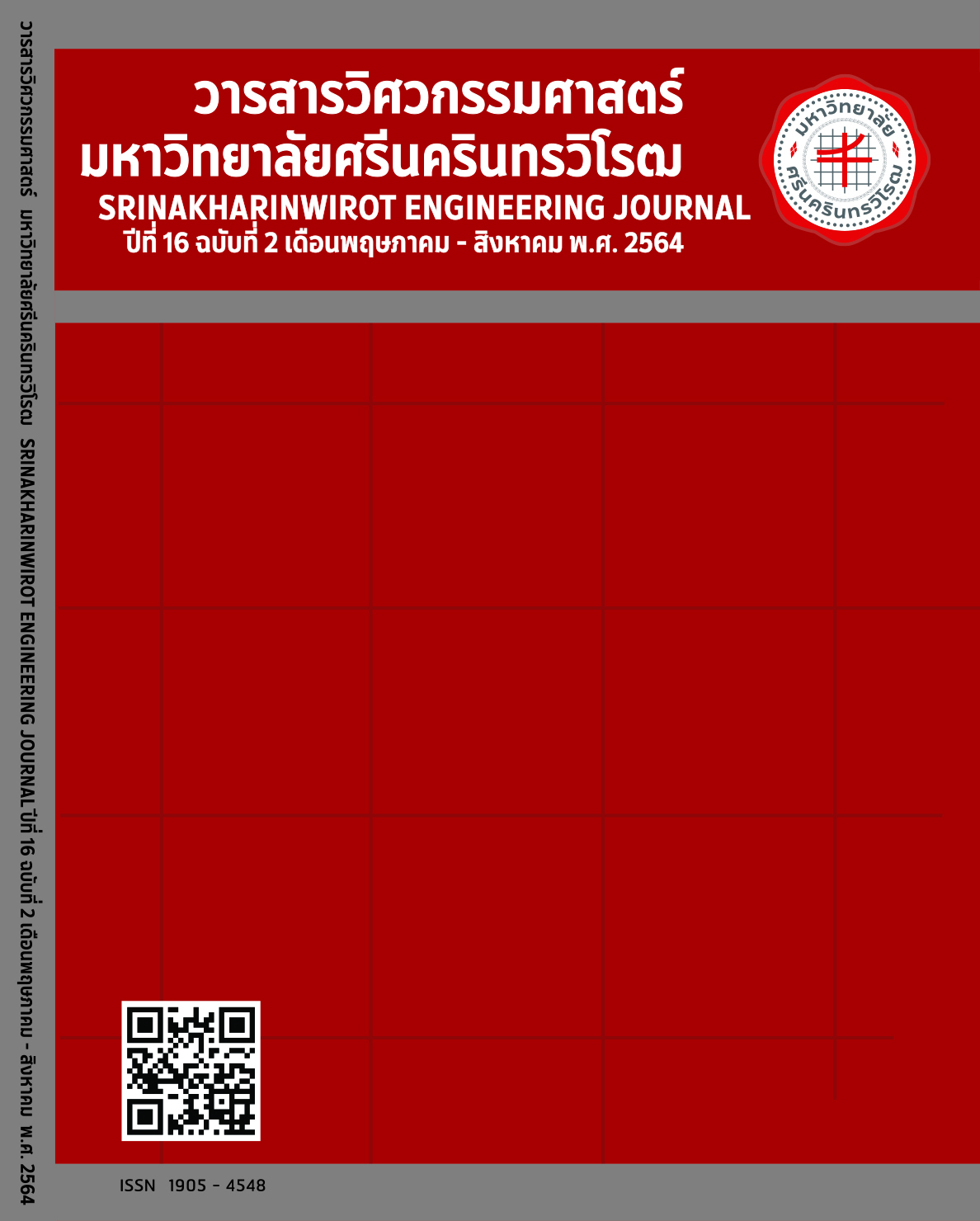The effect of installation angle on the electrical energy measurement of an induction type single phase kilowatt hour meter
Main Article Content
Abstract
Nowadays, a kilowatt hour meter is often installed in a tilted manner. It may cause the error of kilowatt hour meter. The objective of this research is to investigate the effect of installation angle on the electrical energy measurement of the single phase kilowatt hour meter. This research was carried out with an induction type kilowatt hour meter with a rated current of 5(15) A single phase and adjusted the installation angle in the face down and sideways by adjusted 50 increment from 00 to 900 by constant electric energy. The results were found that if installation angle are increase, the turntable of the induction type kilowatt hour meter will be more slowly even though there are different power factor values but the electric energy remains the same. The results obtained were not significantly different. But, the effect of installation angle of the induction type kilowatt hour meter will be more if current and quality of the induction type kilowatt hour meter is low. Therefore, this research will be important information in considering the improvement of the operating process in order to achieve fairness in buying-selling electricity between Provincial Electricity Authority and electricity (PEA) users and it is for policy to reduce the electricity loss of PEA.
Article Details

This work is licensed under a Creative Commons Attribution-NonCommercial-NoDerivatives 4.0 International License.
Copyright belongs to Srinakharinwirot University Engineering Journal
References
Enterprise Planning Division. (2021 Mar). Provincial Electricity Authority – PEA [Online]. Available: https://www.pea.co.th
Provincial Electricity Authority, Regulation on method of watthour meter, 2019.
Provincial Electricity Authority, Manual of watthour meter verification, PEA NE1, 2018.
A. Kradkram, “Factors affecting the amount of the power meter damage: A case study of the Provincial Electricity Authority, Bang Pa-in District,” M.S. thesis, Dept. M.B.A., Rajamangala Univ. of Technology Thanyaburi, Thailand, 2017.
A. A. Hossam-Eldin and R. M. Hasan, "Study of the effect of harmonics on measurments of the energy meters,"in 2006 Eleventh International Middle East Power Systems Conference, El-Minia, Egypt, 2006, pp. 547-550.
A. Haas, J. Niitsoo, P. Taklaja and I. Palu, "Analysis of electricity meters under distorted load conditions,"in 2012 Electric Power Quality and Supply Reliability, Tartu, Estonia, 2012, pp. 1-4.
H. D. Stryczewska, R. Goleman, M. Pietras and T. Gi?ewski, "Evaluation of the damages in three-phase watt-hour induction meters after external high magnetic field exposition," in 2017 International Conference on Electromagnetic Devices and Processes in Environment Protection with Seminar Applications of Superconductors (ELMECO & AoS), Naleczow, Poland, 2017, pp. 1-4.
Provincial Electricity Authority, Standard of PEA for 3-5 A 1-? 220 V Meter installation on 8 m concrete pole, Assembly No. 0524, 1983.
Provincial Electricity Authority, Standard of PEA for 3-15 A 1-? 220 V Meter installation on 8 m concrete pole (Cu service entrance cable), Assembly No. 0524 A, 1998.
Provincial Electricity Authority, Watthour meter regulation and defensive measure infraction of electricity consumption, 2016.
TIS 2336-2552, Electricity metering equipment (ac) - particular requirements - electromechanical meters for active energy (class 0.5 , 1 and 2), 2009.
P. Rodkumneud, P. Srimee, W. Puppor and K. Hongsombut, “Installation of a turntable type meter for proper use,” Industrial Technology Journal Surindra Rajabhat University, vol. 5, no. 1, pp. 1-7, June 2020.
C. Ratanasumawong, P. Asawapichayachot, S. Phongsupasamit, H. Houjoh and S. Matsumura, “Estimation of sliding loss in a parallel-axis gear pair,” Journal of advanced mechanical design system and manufacturing, vol. 6, No. 1, pp. 88-103, 2012.
P. Asawapichayachot, “Improvement of a mathematical model and experiment for estimation of sliding loss in helical gear transmission,” M.S. thesis, Dept. Mach. Eng., Chulalongkorn University, Bangkok, Thailand, 2011.


